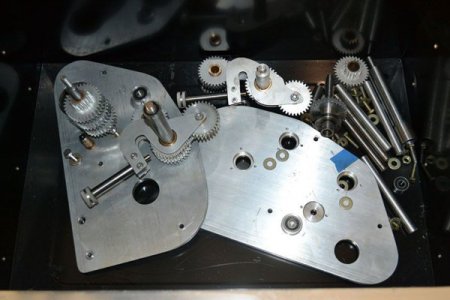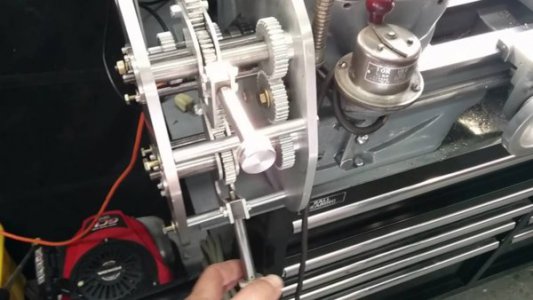- Joined
- Dec 25, 2011
- Messages
- 10,552
It's a TH54 and doesn't have the serial number on the end like my other machines. The only number I've found is "TH16274 S" stamped in to far end of the front way. I haven't had a reason to pull the spindle yet, so no dates at this point.
It's kind of a "resto-mod" machine. The PO owns a small shop near Atlanta and did a full restoration of it along with adding some goodies - like DROs on the X, Y and tailstock and DC drive and motor on the lead screw. Also came with a QC tool post a quite a few holders and extra tooling.
Up until the mid 1950's, all Atlas built lathes had the machine serial number stamped into the top of the right end of the front way. In the first few years, there was also a "V", "H", "TV" or "TH" prefix. "V" and "H" indicate that the machint was originally sold with a Vertical or a Horizontal countershaft. If that letter was preceded by a "T", the lathe had Timken spindle bearings. If not, it had babbit ones. In about the same period, both Atlas and Craftsman lathe serial numbers had or usually had an "S" suffix. No one still alive seems to know what the "S" means. Earlier, the prefix was "D" or "TD" or "E". And before that "A", "B". "C" or nothing. "Nothing" meant the complete 16-speed screw cutting lathe. "A", "B", "C" or "E" were models missing certain things. "D" was the 10D, which had replaced the "Nothing".
Probably made late 1939 or 1940.
I'll comment that I wouldn't attempt to cut threads with a DC motor driving the lead screw. They may look OK and may ever work with standard height nuts. But there is no practical way to guarantee the pitch.
Last edited:


